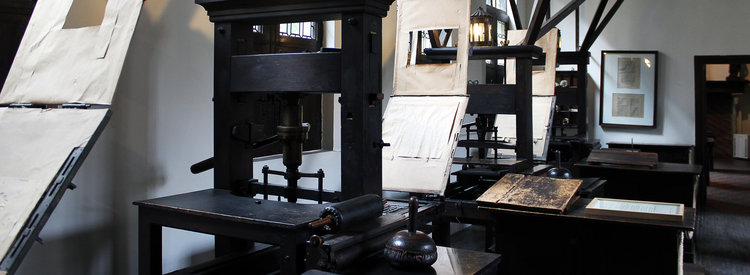Learning about the printing process and the production of Shakespeare’s First Folio has made us aware of how commercially charged and collaborative the composition of a book was. We found that commercial value and shared authorship were most vital for understanding the functioning of the literary sector in the early modern period; we were not aware of how important these aspects were prior to studying the module.
The significance of the paratextual material included in books illuminates the collaborative effort of printing; the sections from other writers discussing the text, notes from the ‘author’ and title pages to publicise printing houses (to name a few paratextual inclusions) simultaneously remove value from the text and insert value into the paratext, which suggests that books were not only produced for distributing single texts but for distributing ideas, concepts, and advertisements of services.
The printing of a book was not the organised process that it is today and edits had to made to rectify the countless mistakes that had occurred. Signature marks, pagination, and press-figures distinguish printing houses and individual printers. These are key indicators for identifying whether a book is authentic or not; for example, signing a book with an asterisk suggested that although the text was in English, it wasn’t originally and was therefore a translation. This is extremely important to note when analysing a text, because editorship becomes transnational, and therefore possibly biased. Frequent edits by the Master of the Revels, Tilney, constituted a large part of the paratext of early modern books. The extent of Shakespeare and his contemporary’s play’s censorship is identifiable from the annotations, attached notes, or in some cases large marks of crossing out.
The small annotations and scribbles seen in early modern printed books adds humanity to the collaborative nature of printing, helping a 21stcentury viewer of the pages be able to imagine the reality of the different people involved in printing a book. We didn’t realise that Shakespeare wasn’t involved in the composition of the First Folio, which brings into question the validity of his ‘works’. Since the paratextual collaborations were such a major part of early modern books, we can infer that a large amount of collaboration went into producing Shakespeare’s works; since Shakespeare himself wasn’t alive to contest editing of his material we view his plays less as beacons of his sole genius, but as confirmation that he was a hard-working but collaborative author.
Going forward, we will approach early modern books and Shakespeare plays differently, seeing them as demonstrations of compiled talent, as opposed to a creation of a single author. Since books were subject to alterations due to lack of quality, we want to remove our subconscious belief that a published early modern book is superior to an unpublished manuscript. This principle can also be applied to other modules like Women on Trial; performance pieces that aren’t included in books can be viewed as equally as valuable as published pieces.
Elli, Becky, Kelly, Sophia, Luke


